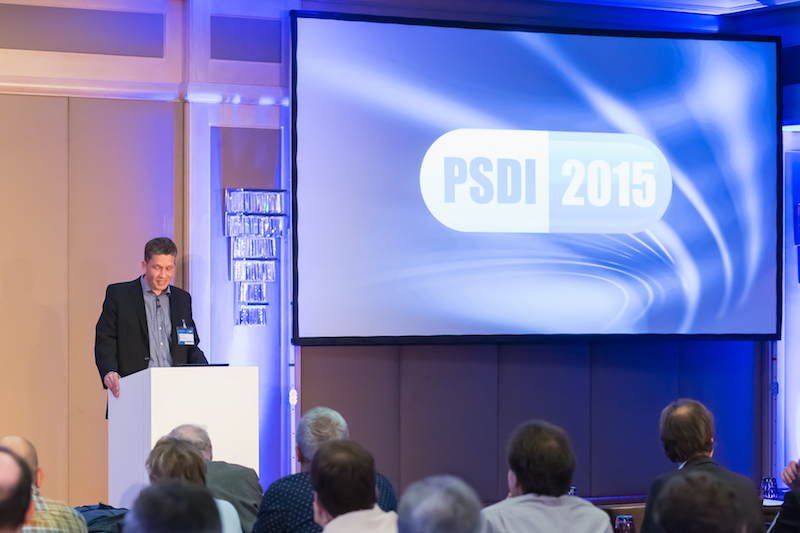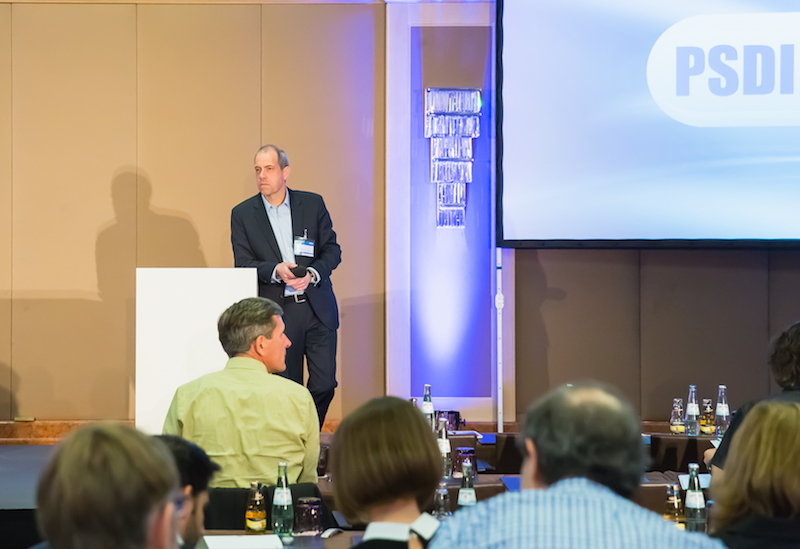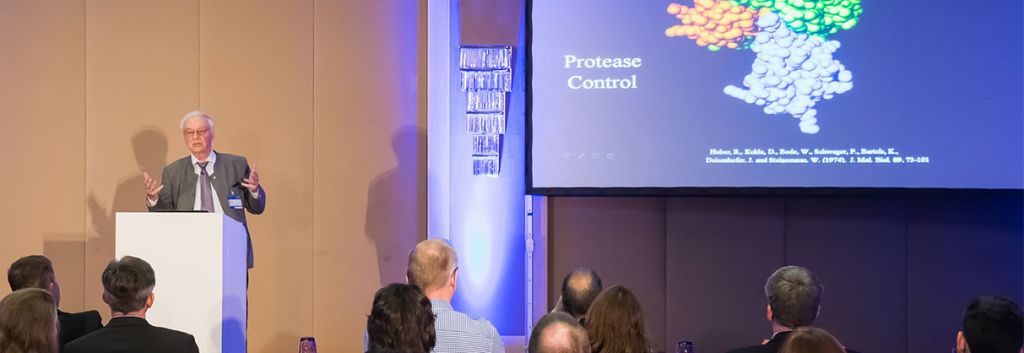Structural biology, the study of the structure of biological macromolecules, is becoming a real asset in the drug development process. The PSDI meeting is THE not-to-be-missed event for the experts in this field. Labiotech.eu gives you a glimpse of the last trends discussed during this conference thanks to our exclusive interview with Dr Peter Reinemer, COO of Proteros.
For those who missed it, we have already presented a detailed profile of Proteros in a previous article. This German company is a leader of the Structural Biology field, providing its high-level services to other Pharma or Biotech companies in need of such specific knowledge. Recently the company also started developing its own portfolio of drugs including a promising candidate that could play a role in CNS-related diseases, for example.
The PSDI is a once-a-year event, famous in the field for being the place where the experts meet and exchange their latest discoveries. This year was the first time a Biotech company like Proteros organized the PSDI meeting. What does that mean for your company?
PSDI has been taking place for almost 23 years now and has become a reference for everybody doing protein structure determination in the setting of the pharmaceutical industry. This year was the first time this prestigious event came to Germany and it was an honor for us to organize it.
Speaking of success: Could you summarize this year’s event for us in two sentences, please?
We managed to bring together 150 experts from 65 companies, with significant participation of US delegates.
The talks during the event were scientifically up-to-date representing the latest advances in protein-ligand-interaction or novel technological approaches in protein crystallization, for example.

For a long time, structural biology has been considered as a complementary method in the drug development process. Thanks to the latest advances in the field, this method is becoming a crucial part to rationally develop a new drug. Why is the field exploding right now?
Thanks to structural biology, drug developers are now able to have a high-resolved image in atomic resolution of the drug candidate binding the protein target they are studying. That is unimaginably valuable in the drug optimization process. Structural Biology has already changed the lead optimization process. A recent trend is the integration of structural biology with other methods of lead identification, for example, the now widely-used High Throughput Screening, where millions of molecules are tested on a specific target to identify ´hits´. The crystallography of proteins has recently become so fast that it can be used at the same time as HTS and thus deliver a more comprehensive package of data to scientists, including structural information, assay data and biophysical characterization.
Which are the hot targets right now in structural biology?
I would not say there is one specific hot target right now, as the whole field is advancing technologically. Some years ago, there were still therapeutic areas where structural biology was impossible to use. This is not the case anymore! You can use structural biology techniques in every therapeutic area, even to study the structure of membrane proteins and receptors.
Also, the epigenetics space is becoming more and more important in our field. Proteros, as one example, has become really active in the field, as described in your previous article.
Events, like the PSDI meeting, are great opportunities to exchange specific case studies with other experts, such as Dr. Martina Schäfer from Bayer Healthcare. She gave a presentation on the structure-based discovery of a novel and highly potent inhibitor of the human neutrophil elastase, an important target for pulmonary diseases. The conference additionally had other exiting presentations of this kind from colleagues from Merck Darmstadt, Boehringer Ingelheim. Novartis, Roche, AstraZeneca and BMS to name a few. These kinds of examples represent the bandwidth of programs and targets that have benefitted from the use of structural biology.

What were the most exciting advances you saw this year at the PSDI?
Dr. Frank van Delft from Diamond Light Source, the UK’s national synchrotron science facility, gave a great talk on the fragment-based lead discovery. This technique is based on identifying small chemical fragments, which may bind only weakly to the biological target, and then growing them or combining them to produce a lead with a higher affinity, mainly using computational design methods.
In his high-throughput, fully robotized experiment, Frank has been able to screen 500 crystallized protein fragments within a week, which is quite amazing! That is a dramatic increase in technical capabilities showing that we can screen a full library within a short period of time and I think that will become a strong trend in the field.
How do you think structural biology will impact the small biotech companies trying to develop new drug candidates?
Big Pharma companies usually have internal capabilities to study structural biology. For a biotech company, it’s more difficult and having its own structural biology team is often not possible. 10 years ago, a project in structural biology was quite long and may not have been affordable for a small company. But with the recent improvements, also observed at the PSDI, we know that is not the case anymore and each small biotech can now easily include structural biology to help them in their drug development efforts.
The field will certainly gain a lot from the advances in structural biology!
Visit PSDI’s website HERE
Learn more about Proteros HERE






